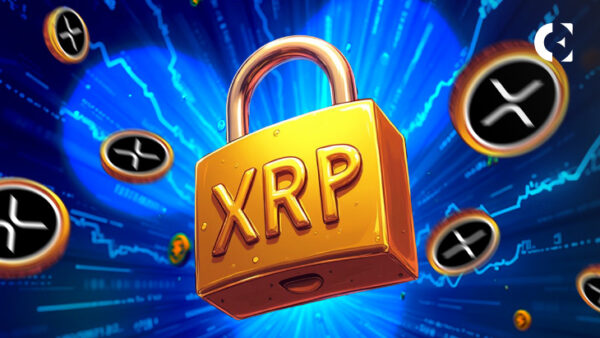- Ripple’s control over 37 billion XRP in escrow is under renewed scrutiny following a recent court ruling.
- Legal experts, developers, and analysts debate whether Ripple truly relinquishes authority over the funds.
- Speculation is mounting that the U.S. government could intervene or even take control of the escrowed XRP.
The debate over Ripple’s unilateral control of XRP tokens in its escrow has resurfaced in the crypto community. This comes as Ripple faces new legal hurdles in its case with the U.S. SEC.
The development sparked bold suggestions from commentators like Brad Kimes, founder of XRPLasVegas, that the U.S. government may have to step in, particularly through Ripple’s escrow.
Meanwhile, developers, legal observers, and blockchain analysts clash over whether Ripple truly relinquishes control of billions of XRP placed in escrow.
U.S. Government to Take Over Ripple’s XRP in Escrow?
Yesterday, Judge Analisa Torres rejected Ripple’s bid to vacate the existing injunction and reduce its federal penalty to $50 million. The court’s stance fuels speculation in the XRP community.
In a tweet, Brad Kimes suggested the ruling may set up the U.S. government as a potential “buyer” of Ripple’s escrowed XRP. Notably, Ripple has around 37 billion XRP in escrow.
The theory posits that the government could leverage the tokens in escrow to establish a national cryptocurrency reserve. Supporters argue that national interest could prompt the court to lift the injunction, not out of preference, but as a federal necessity.
Notably, Brad’s position led to arguments on X over whether Ripple really has control over the XRP in escrow. The funds, locked through the XRP Ledger’s built-in escrow feature, are set to be released monthly through automated protocol conditions.
Related: No Billions from XRP Escrow on SBI’s Books Until Ripple IPO
Ripple created the escrow accounts in 2017, locking up 55 billion XRP to ensure predictable token releases. Each month, one billion XRP becomes eligible for release. Unused portions are returned to escrow.
In a comment, XRPL developer Mayukha Vadari stated that the XRPL protocol, not Ripple, fully manages the system. “Ripple does not actively control those funds or have access to them before the unlock time,” Vadari wrote.
Is There a Difference Between Technical and Legal Control?
Critics argue that while Ripple cannot move the funds at will, it remains the ultimate beneficiary. Daniel Keller, CTO of Eminence, stated, “If I control an account and lock XRP in escrow to benefit myself, I am still the ultimate beneficiary.”
Keller questioned the premise that technical restrictions erase ownership responsibilities. He added that if Ripple initiated the transactions and continues to benefit from the releases, then control, whether direct or indirect, still rests with the company.
He further pointed to court documents and on-chain data, claiming they support his position. “The escrow belongs to Ripple, and they manage it. Always have, always will,” Keller asserted.
Vadari acknowledged that legally, the funds may be attributed to Ripple. However, he emphasized that XRP cannot be accessed or spent until the predetermined conditions are met, due to XRPL’s rules.
While Ripple’s financial reports account for the escrowed tokens, the inability to access or use them until they are released complicates their interpretation. “In terms of the market report, the distinction does matter,” Vadari said. “Ownership and control aren’t always the same.”
Related: XRP Escrow Under Fire: Lawyer Debunks “Price Dump” Theory
How the Government May Take Over Ripple’s Escrow
Meanwhile, Vet, an XRPL validator, proposed that the U.S. government could take control of Ripple’s escrowed XRP by reassigning the regular key of the escrow-holding accounts to a government-controlled address.
This action would grant the government full authority over the escrowed funds. Vet emphasized that the process is technically straightforward and can be executed through a single XRPL transaction.
Disclaimer: The information presented in this article is for informational and educational purposes only. The article does not constitute financial advice or advice of any kind. Coin Edition is not responsible for any losses incurred as a result of the utilization of content, products, or services mentioned. Readers are advised to exercise caution before taking any action related to the company.









